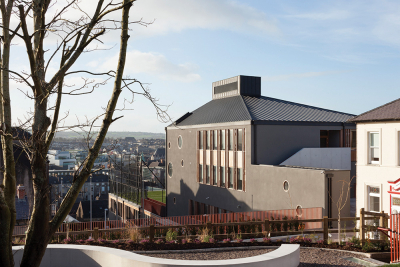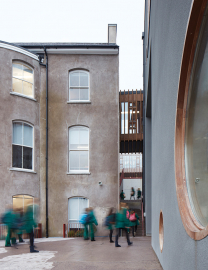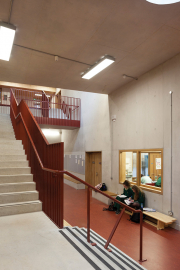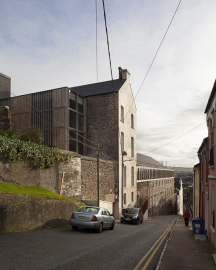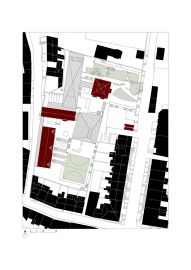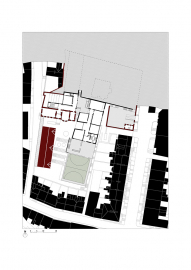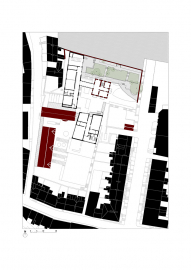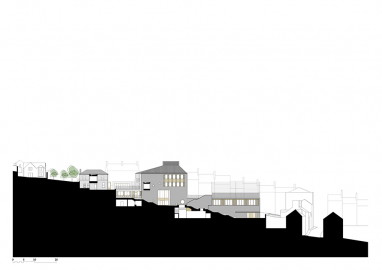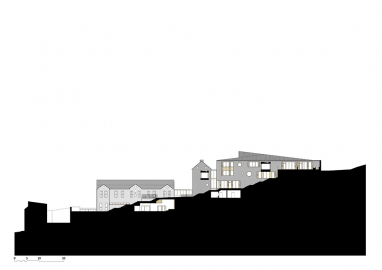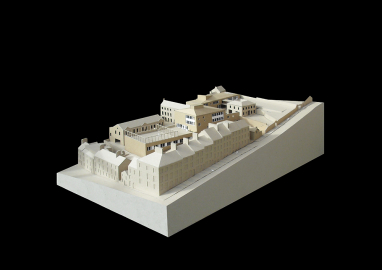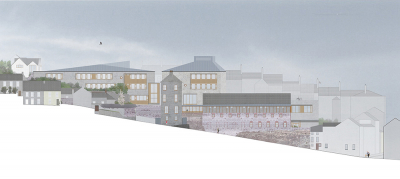St. Angela's College Cork
The school is built on a steeply sloping site. It is designed like a hill-town, with lanes and terraced courts connecting new and old together. New buildings work their way down the hill, passing between existing historic buildings. An external route negotiates the 18m drop in site levels, connecting orchard, courtyards, classrooms, and playgrounds.
This project has been sixteen years in the making. We were commissioned to consider the development possibilities of the site in 1999. Working closely with the school community, we worked through various design options. The school acquired the neighbouring convent site, allowing it to expand on this restricted urban plot. Against the odds, the school remained committed to staying in the city, working within the limits of a constrained and sloping site, sustaining its engagement with the local community. The design was developed out of a careful process of subtraction and addition, a critical evaluation of the liberating possibilities offered by the restrictive constraints of the context. In the end, the given difficulties gave rise to a scheme with a more urban, perhaps civic, character than if the project had started out with the easier advantage of an open flat site.
Four nineteenth-century buildings were refurbished and two new purpose-designed buildings were added, one for sciences and one for arts. The biggest challenge was to incorporate a full-size sports hall on this confined hillside. A clear-span concrete structure is located on the lowest part of the site. Its roof, at the level of the entrance from the street, makes new ground on the site and provides a sunny terrace and ball-court with views out over the city below. Another challenge was working with a standard Department of Education secondary school brief to a tight budget on a very complicated and non-standard site. Red sand from Cork red sandstone was added to the mix for the concrete paving, in continuation with the typical street landscape of Patrick’s Hill. Architects and builders worked closely together to get the best value out of the project, to make a lasting public building on a very special site.
Refurbished to conservation standards and with its services designed to environmental and energy-saving principles, the school belongs in its place. It is integrated within a conservation area of the city centre. Other than those that are required for disability access, there are no car-parking spaces on the site. Staff and students walk to school or commute by public transport. Despite the six-storey drop in ground levels, and the crowded conditions of the building context, all new and refurbished spaces are naturally lit and naturally ventilated. Characteristic elements, such as the red limestone walls and terraced landscape, have been conserved. The green space of the orchard has been incorporated as an extension of the arts teaching space. The school is an example of sustainable urban development and resilient community life. It is an energy efficient and compact design, equipped to survive into the future on its historically established site. It challenges the tendency towards urban sprawl. The school has been enabled, by the rigorous application of sustainable principles, to continue its educational mission as a local resource in the city.

